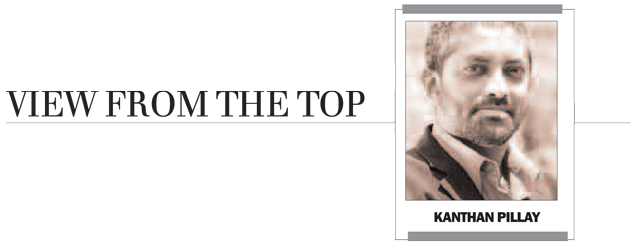
Being shot out of a cannon will always be better than being squeezed out of a tube, Hunter S Thompson wrote.
Recalling those words made me burst out laughing when Elon Musk unveiled his proposal for the Hyperloop – a high speed transportation system travelling at speeds of up to 800 miles per hour.
(That's about 1 287 km/h if you don't speak imperial. It's faster than you have ever travelled – unless you flew in the Concorde or took a Thunder City supersonic flip out of Cape Town.)
But let me back up a bit.
The state of California announced plans to build a “high speed” rail network between San Francisco and Los Angeles at a proposed cost of US $64 billion.
Musk, who is the South African-born genius behind Pay Pal, Space X, and Tesla Motors, did a quick calculation and found that trips on the new train would be slower and more expensive than air travel and more expensive than travelling by car.
The Los Angeles to San Francisco route is of interest to us because it's not dissimilar to the logistics of linking Durban and Johannesburg by high speed rail.
In both cases, we are talking routes of approximately 600 km. In both cases, we have government proposals to build rail networks using taxpayers’ money. In both cases, profitability is dubious.
Then minister of transport, Sbu Ndebele, proposed our own link in April 2010 at a cost of US $30 billion.
An amount of R300 billion was earmarked as part of the R3,2 trillion infrastructure expenditure under consideration between now and 2020.
In January this year, Japan emerged as the front runner for the deal, with the first phase of a 100 km link from King Shaka International Airport in Durban to Pietermaritzburg to be completed over the next seven years. The project cost thus far is R160 billion, but will be a lot higher given the fall of the rand since January.
But back to California. Musk's view was that he was disappointed at the state's proposal. He asked: “How could it be that the home of Silicon Valley and JPL – doing incredible things like indexing all the world’s knowledge and putting rovers on Mars – would build a bullet train that is both one of the most expensive per mile and one of the slowest in the world?”
So, Musk this week proposed an entirely different mode of transport – aluminium capsules carrying 28 people apiece shot through a steel tube linking the two cities in a loop.
The capsules will be accelerated up to 800 mph covering the journey between the cities in about a half hour. A new capsule will pop into the tube every two minutes during off peak hours and every 30 seconds during peak hours. Solar panels on top of the tubes provide power to the entire system.
The total cost of the system, he predicts, will be around $6 billion.
As usual, there were immediate doomsayers claiming the idea is too far fetched.
Except I've spent a while poring through the 57-page document released by Musk outlining how the system could be built. And it makes sense.
Nearly all of the pieces of the puzzle make use of existing technologies including those developed by Musk himself at his various companies.
The capsules themselves ride on a pressurised cushion of air from half to one-and-a-half millimetres off the ground.
The air is pumped from a high pressure tank on board the capsule. A linear electric motor, using similar technology to that of the Tesla Motors electric car engine, will accelerate the capsule to more than 1 220 km/h.
To allow for high speed with reduced air friction, air pressure inside the tube will be reduced to around 1/6 the air pressure on the planet Mars.
The true beauty of the design is that it can be built largely along the path of the existing freeway on pylons above the road.
Musk has taken the entire conceptual model and turned it into an Open Source project.
In other words, anyone in the world can take the concept, improve upon it, build it, and sell the finished product on to anyone.
We have all of the conditions necessary to make that happen in this country.
We have the raw materials, the intellectual capital, and the terrain.
All that we need to make this happen is political leadership with imagination.
I remain hopeful.
